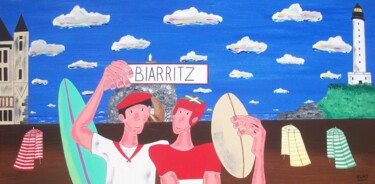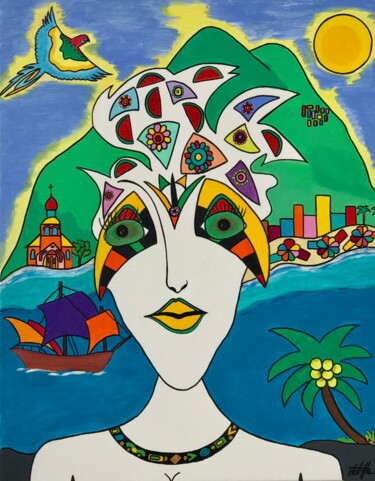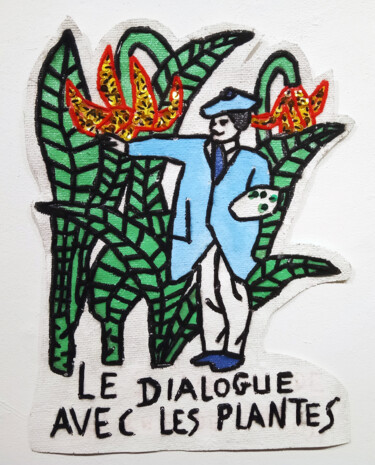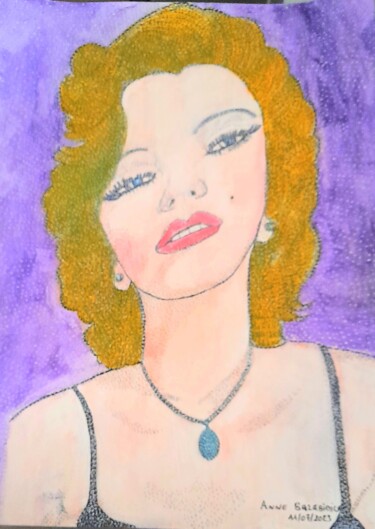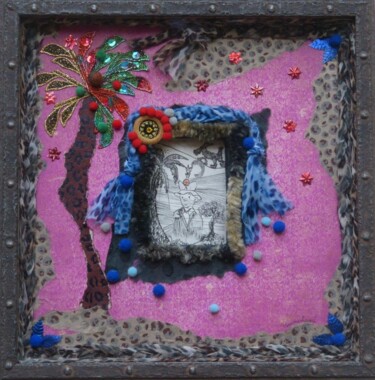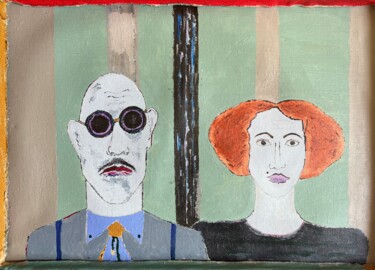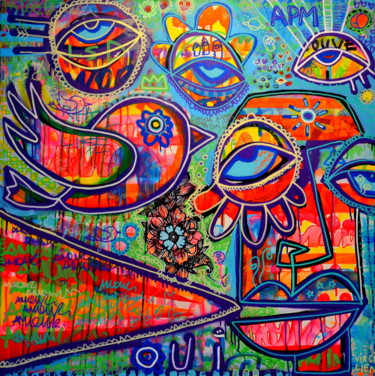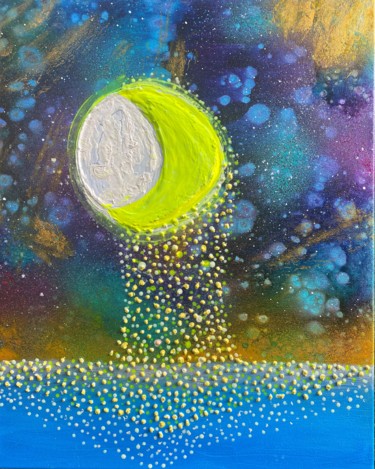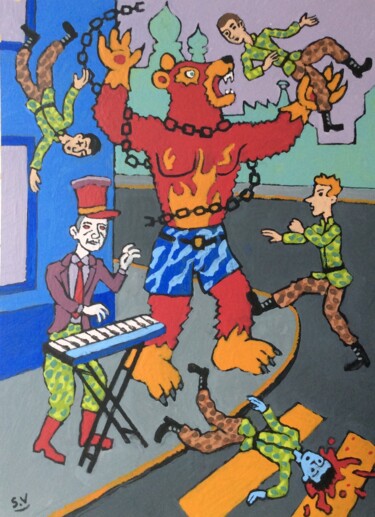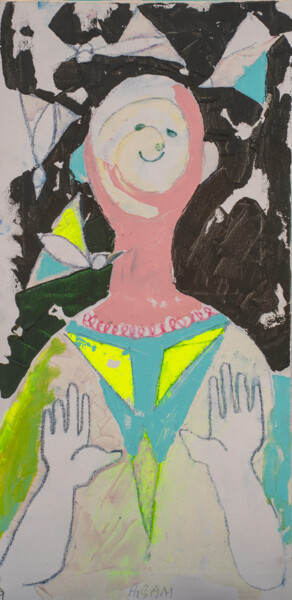
16 Opere d'arte originali, edizioni limitate e stampe:
Come definire stile Arte naif ?
Cos'è l'arte naïf?
Cos'è l'arte naif e come definisci l'arte naif? La pittura della navata è uno stile artistico che è stato avviato da artisti come Henri Rousseau che non sapevano molto di arte. La maggior parte delle volte, l'arte navata è definita come arte visiva realizzata da qualcuno che non ha avuto la formazione e l'istruzione di un artista professionista. Quando un artista professionista cerca di copiare questo stile, viene spesso chiamato "primitivismo".
Qual è la definizione di arte naif?
L'arte navata è generalmente definita come arte visiva realizzata da qualcuno che non ha la formazione e l'istruzione formale di un artista professionista (in anatomia, storia dell'arte, tecnica, prospettiva, modi di vedere). Quando un artista addestrato cerca di copiare questo stile, a volte viene chiamato primitivismo, arte pseudo-navata o finta arte della navata.
A differenza dell'arte popolare, l'arte della navata non deve provenire da uno specifico contesto o tradizione culturale popolare. Infatti, almeno nelle economie avanzate ea partire dalla rivoluzione tipografica, è impossibile non conoscere la tradizione locale delle belle arti, che si è diffusa attraverso stampe popolari e altri media. Gli artisti ingenui conoscono le convenzioni delle "belle arti" come la prospettiva grafica e le convenzioni compositive, ma non possono o non le usano al massimo delle loro potenzialità. L'arte outsider (chiamata anche "art brut"), d'altra parte, si riferisce a opere che provengono da un background simile ma hanno poco a che fare con il mondo dell'arte tradizionale.
L'arte navata è nota per essere semplice e onesta come un bambino, ed è per questo che viene spesso copiata. Questo tipo di pittura di solito ha uno stile di disegno piatto e un modo semplice di mostrare la profondità. Henri Rousseau, post-impressionista francese vissuto dal 1844 al 1910 e scoperto da Pablo Picasso, è stato uno dei più importanti pittori dell'"arte naif".
C'è stato qualche disaccordo su cosa significhi il termine e dove "finisca" con altri termini come folk art e outsider art. L'arte navata è solitamente usata per descrivere opere d'arte realizzate da artisti autodidatti, come dipinti e sculture. L'arte popolare, d'altra parte, si riferisce a cose che possono essere utilizzate nella vita di tutti i giorni. Ma questa differenza è stata discussa. "Provinciale" è un'altra parola che può essere usata, specialmente per dipinti ed edifici. È usato principalmente per descrivere il lavoro di artisti che hanno avuto una formazione tradizionale ma il cui lavoro è accidentalmente al di sotto degli standard metropolitani o di corte.
Quali sono le caratteristiche dell'arte naïf?
Le persone spesso pensano all'arte ingenua come al lavoro di un estraneo che non ha avuto (o non ha avuto molta) formazione o laurea. Prima del XX secolo questo era vero, ma ora ci sono scuole di arte naïf. L'arte ingenua è ora un tipo di arte pienamente riconosciuto che può essere visto nelle gallerie di tutto il mondo.
Le caratteristiche dell'arte della navata non si adattano bene agli aspetti formali della pittura, specialmente quando non vengono seguite le tre regole della prospettiva (come descritto dai pittori progressisti del Rinascimento):
- La dimensione delle cose si riduce man mano che si allontanano,
- I colori cambiano man mano che ti allontani, -I dettagli diventano meno chiari man mano che ti allontani,
Ecco i risultati:
- Gli effetti della prospettiva sono geometricamente sbagliati (sembrano disegni di bambini o dipinti del Medioevo, ma è qui che finisce il paragone).
- Forte uso del pattern, colore grezzo su tutti i piani della composizione, senza attenuazioni sullo sfondo. -Uguale attenzione ai dettagli, compresi quelli sullo sfondo che dovrebbero essere sfumati.
La gente dice che l'arte naif è facile da individuare perché non è complicata. È diventato così popolare e noto, tuttavia, che molti esempi potrebbero essere definiti "pseudo-ingenuo".
L'arte "pseudo nave" o "falsa nave" è l'opera di un artista che è più imitativo o consapevole di sé e il cui lavoro sembra più copiato che originale. L'arte "Nave" è opera di un artista che non è andato alla scuola d'arte o all'accademia, come Henri Rousseau o Alfred Wallis.
Poiché l'autodidattismo è diventato più popolare come un modo per imparare nei tempi moderni, è improbabile che negli artisti moderni si trovi una rigorosa ingenuità. Agli artisti viventi non sempre piacciono le categorizzazioni ingenue, ma è probabile che questo cambi man mano che diventano noti segnali più dignitosi. Ora ci sono musei per l'arte naïf a Kecskemét, in Ungheria; Kovaica, Serbia; Riga, Lettonia; Jaén, Spagna; Rio de Janeiro, Brasile; Vicq, Francia; e Parigi. Gary Bunt, Lyle Carbajal, Gabe Langholtz, Gigi Mills, Barbara Olsen, Paine Proffitt e Alain Thomas sono tutti artisti viventi di lingua inglese che ammettono di avere uno stile ingenuo.
"Arte primitiva" è un altro termine che le persone che non hanno studiato arte usano spesso per descriverla. Storicamente, tuttavia, è stato utilizzato maggiormente per descrivere l'arte di culture che il mondo accademico occidentale ha considerato "primitive" socialmente o tecnologicamente, come l'arte dei nativi americani, dell'Africa subsahariana e delle isole del Pacifico (vedi arte tribale). Questo è diverso dal movimento autocosciente ispirato al "primitivo" chiamato "primitivismo". L'arte popolare è un altro termine simile all'arte navata ma non la stessa cosa.
Ci sono anche i termini "navismo" e "primitivismo", che di solito sono usati per descrivere pittori professionisti che usano l'arte navata come loro stile (come Paul Gauguin, Mikhail Larionov, Paul Klee).
Quali sono le caratteristiche dei dipinti Naïf?
L'arte della nave è talvolta usata per descrivere l'arte realizzata da persone senza formazione professionale o titoli di studio. Prima del XX secolo questo era vero, ma ora ci sono accademie per la pittura delle navate. Ora, l'arte ingenua è una forma d'arte ben nota che può essere vista nelle gallerie di tutto il mondo. Le parti formali della pittura sono stranamente simili alle cose che compongono l'arte navata, specialmente quando si tratta di non seguire le tre regole della prospettiva.
-Man mano che le cose si allontanano, le loro dimensioni si riducono.
-Man mano che ti allontani da un colore, questo diventa meno vivido.
-Man mano che ti allontani, i dettagli diventano meno chiari.
Uno dei risultati è che gli effetti della prospettiva sono sbagliati da un punto di vista geometrico. Non c'è indebolimento dello sfondo in nessuno dei piani della composizione e ci sono molti motivi. La stessa cura è stata data a tutti i dettagli, anche quelli sullo sfondo che dovrebbero essere più scuri.
La gente dice che l'arte della navata è facile da riconoscere perché non ha molti dettagli. Ma poiché è diventato uno stile così noto, molti pezzi possono essere inseriti nelle categorie pseudo-navata o primitivismo. L'autodidatta sta diventando sempre più popolare come metodo di apprendimento, quindi la rigorosa ingenuità non è qualcosa che si vede spesso negli artisti di oggi.
Gli artisti viventi potrebbero non accettare sempre semplici categorizzazioni, ma è probabile che questo cambi man mano che diventano disponibili segnali più dignitosi.
Discover contemporary artworks on Artmajeur
Contemporary art is a vibrant constellation of artistic expressions. This creative universe encompasses a wide array of mediums, from paintings, sculpture, and photography to drawing, printmaking, textile art, and digital art, each medium a star shining with its own distinct radiance. Artists use diverse supports and materials to bring their visions to life, such as canvas, wood, metal, and even innovative digital canvases for the creation of virtual masterpieces.
A contemporary painting, for instance, may weave its story through the masterful strokes of acrylic or oil, while a contemporary sculpture might sing its song in the language of stone, bronze, or found objects. The photographic arts capture and manipulate light to produce striking images, while printmaking employs techniques like lithography and screen-printing to produce multiples of a single, impactful image. Textile art plays with fabrics and fibers, whereas digital art pushes the boundaries of creation with innovative technology.
The allure of contemporary art lies in its boundary-pushing nature, its relentless quest for experimentation and its constant reflection of the evolving human experience. This boundless creativity, coupled with its strong social and personal commentary, makes every piece of contemporary art a unique emblem of its time, a mirror held up to the realities and dreams of our complex world. It whispers to us, moves us, provokes thought, and kindles a deep emotional response, stirring the soul of anyone willing to listen. It is, indeed, the language of emotions and ideas, spoken in the dialect of our era.

©2023 Art Dalyna
Origins and history of contemporary art
The story of contemporary art unfolds in the mid-20th century, marked by seismic shifts in artistic expression. Post-World War II, around the 1950s and 1960s, artists began experimenting beyond traditional confines, challenging the norms of what art could be. This revolutionary epoch birthed myriad new movements and artistic forms such as abstract expressionism, pop art, and minimalism. Paintings, once confined by realism, embraced abstraction, as artists used color and form to express emotions and ideas. Notable periods like the advent of pop art in the late 1950s and early 1960s saw artworks mimicking popular culture and mass media, reflecting society’s shifting focus.
The sculptural arts, too, witnessed a metamorphosis. Sculptors started to experiment with new materials and forms, often creating artworks that interacted with the viewer and the surrounding space, fostering a sense of engagement. Drawing, a timeless practice, also evolved, with artists incorporating innovative techniques and concepts to redefine its role in contemporary art.
Photography, a relatively new medium, emerged as a powerful tool in the contemporary art landscape. Born in the 19th century, it truly came into its own in the latter half of the 20th century, blurring the lines between fine art and documentation. Printmaking, a practice dating back to ancient times, saw renewed interest and experimentation with techniques like lithography, etching, and screen printing gaining prominence.
The realm of textile art expanded dramatically, as artists began to appreciate the versatility and tactile quality of fabric and fibers. Artists began using textiles to challenge the boundaries between fine art, craft, and design.
The dawn of digital technology in the late 20th century heralded a new age for contemporary art. Digital art emerged as artists started leveraging new technologies to create immersive, interactive experiences, often blurring the line between the virtual and the physical world.
Through these transformative periods, the essence of contemporary art has remained the same: a dynamic, evolving reflection of the times we live in, continually pushing boundaries and embracing the new, always questioning, always exploring.

©2023 Anne Bazabidila
Evolutions of theses contemporary works in the art market
As we navigate through the 21st century, the dynamic landscape of contemporary art continues to evolve and expand, reflecting our ever-changing world. Contemporary paintings, once primarily confined to two-dimensional canvases, now embrace a multitude of forms and techniques, ranging from mixed media installations to digital creations, each piece a rich a weaving of thoughts, emotions, and narratives. Sculpture, too, has ventured far beyond traditional stone and bronze, with artists incorporating light, sound, and even motion, embodying the ephemerality and flux of the modern world.
Photography, in the hands of contemporary artists, has expanded its horizons, seamlessly blending with digital technology to create breathtaking imagery that challenges our perception of reality. Drawing, as well, has transcended the borders of paper, incorporating multimedia elements and exploratory techniques to redefine its role in the artistic discourse. Printmaking continues to flourish, with contemporary artists using traditional methods in innovative ways to deliver potent social and personal commentaries.
Textile art, once considered a craft, now holds a prominent place in the contemporary art world, with artists using it to explore issues of identity, tradition, and cultural heritage. Meanwhile, digital art, the newest member of the contemporary art family, has revolutionized the way we create and interact with art, presenting immersive experiences that blur the boundary between the virtual and the physical.
These diverse forms of contemporary art hold significant value in the current art market, not only due to their aesthetic appeal but also their ability to encapsulate and communicate complex ideas and emotions. Collectors, curators, and art lovers worldwide seek these works, drawn to their inherent dynamism, their innovative use of materials, and their eloquent expressions of our shared human experience. As a testimonial to our times, these contemporary artworks encapsulate the pulse of our society and the resonance of individual voices, forever etching our collective narrative into the annals of art history.
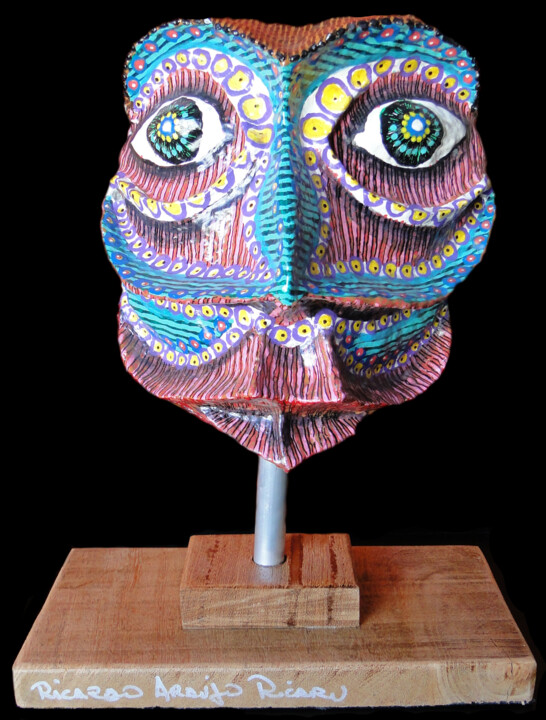
©2022 Ricaru Araujo
Famous Contemporary Artists
As we delve into the vibrant realm of contemporary art, we encounter an array of artists who shape this dynamic field. Each a master in their medium - painting, sculpture, photography, drawing, printmaking, textile, or digital art - they push artistic boundaries, reflecting our era and challenging perceptions. Let’s explore these remarkable contributors and their groundbreaking works.
1. Gerhard Richter - Known for his multi-faceted approach to painting, Richter challenges the boundaries of the medium, masterfully oscillating between abstract and photorealistic styles. His works, whether featuring squeegee-pulled pigments or blurred photographic images, engage in a fascinating dialogue with perception.
2. Jeff Koons - A significant figure in contemporary sculpture, Koons crafts monumental pieces that explore themes of consumerism, taste, and popular culture. His iconic balloon animals, constructed in mirror-polished stainless steel, captivate with their playful yet profound commentary.
3. Cindy Sherman - An acclaimed photographer, Sherman uses her lens to explore identity and societal roles, particularly of women. Renowned for her conceptual self-portraits, she assumes myriad characters, pushing the boundaries of photography as a medium of artistic expression.
4. David Hockney - Hockney, with his prolific output spanning six decades, is a pivotal figure in contemporary drawing. His bold use of color and playful exploration of perspective convey an intoxicating sense of joy and an unabashed celebration of life.
5. Kiki Smith - An innovative printmaker, Smith’s work explores the human condition, particularly the female body and its social and cultural connotations. Her etchings and lithographs speak to universal experiences of life, death, and transformation.
6. El Anatsui - A master of textile art, Anatsui creates stunning tapestry-like installations from discarded bottle caps and aluminum scraps. These shimmering, flexible sculptures blend traditional African aesthetic with contemporary art sensibilities, speaking to themes of consumption, waste, and the interconnectedness of our world.
7. Rafael Lozano-Hemmer - A leading figure in digital art, Lozano-Hemmer utilizes technology to create interactive installations that blend architecture and performance art. His work, often participatory in nature, explores themes of surveillance, privacy, and the relationship between people and their environments.
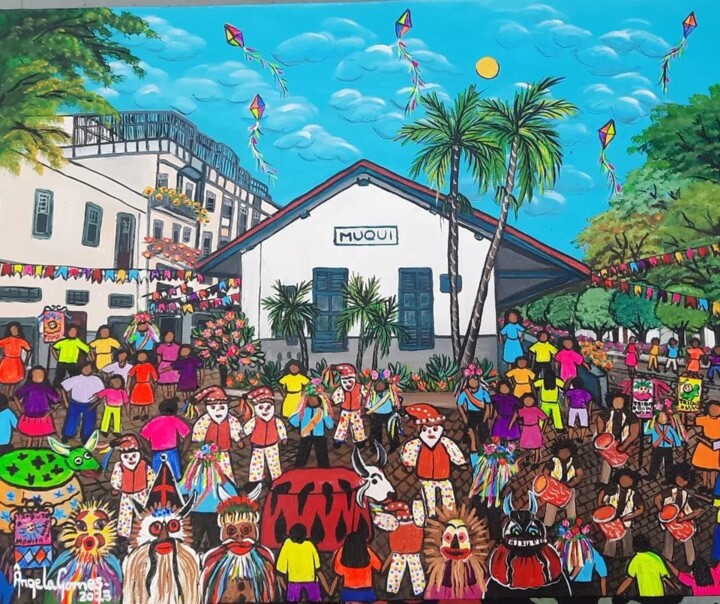
©2023 Angela Gomes
Notable contemporary artworks
The contemporary art landscape is a dynamic patchwork of diverse expressions and groundbreaking ideas, each artwork a unique dialog with its audience. Here are a selection of some renowned contemporary artworks, spanning various media such as painting, sculpture, photography, drawing, printmaking, textile art, and digital art, that have profoundly influenced this vibrant movement.
"Cloud Gate" by Anish Kapoor, 2006 - This monumental stainless steel sculpture, also known as "The Bean," mirrors and distorts the Chicago skyline and onlookers in its seamless, liquid-like surface, creating an interactive experience that blurs the line between the artwork and the viewer.
"Marilyn Diptych" by Andy Warhol, 1962 - An iconic piece of pop art, this silkscreen painting features fifty images of Marilyn Monroe. Half brightly colored, half in black and white, it reflects the dichotomy of celebrity life and its influence on popular culture.
"Rhein II" by Andreas Gursky, 1999 - This photographic artwork, a digitally-altered image of the Rhine River, is celebrated for its minimalist aesthetic. It strips the landscape to its bare essentials, invoking a sense of tranquility and vastness.
"Black Square" by Kazimir Malevich, 1915 - A revolutionary painting in the realm of abstract art, this piece, featuring nothing more than a black square on a white field, challenges traditional notions of representation, symbolizing a new era in artistic expression.
"Puppy" by Jeff Koons, 1992 - This giant sculpture, a West Highland Terrier blanketed in flowering plants, explores themes of innocence, consumer culture, and the interplay between high art and kitsch. It’s a delightful blend of traditional sculpture and garden craft.
"Re-projection: Hoerengracht" by Ed and Nancy Kienholz, 1983-1988 - A room-sized tableau representing Amsterdam’s red-light district, this work combines elements of sculpture, painting, lighting, and found objects. It engages viewers in a stark commentary on commodification and objectification.
"Untitled" (Your body is a battleground) by Barbara Kruger, 1989 - This photomontage, combining black-and-white photography with impactful text, explores issues of feminism, identity, and power. Its potent, confrontational message is a prime example of the power of text in contemporary visual art.
"For the Love of God" by Damien Hirst, 2007 - This sculpture, a platinum cast of a human skull encrusted with 8,601 diamonds, probes themes of mortality, value, and the human fascination with luxury and decadence. It’s a compelling blend of macabre and magnificence.
"Physical impossibility of Death in the Mind of Someone Living" by Damien Hirst, 1991 - This artwork, featuring a tiger shark preserved in formaldehyde, blurs the line between traditional sculpture and biological specimen. It prompts viewers to contemplate mortality and nature’s ferocity.
"One and Three Chairs" by Joseph Kosuth, 1965 - A piece of conceptual art, it presents a physical chair, a photograph of a chair, and a dictionary definition of a chair, thus exploring the relationship between language, picture, and referent in art.
These pieces, in their diversity, exemplify the rich tapestry of contemporary art, each piece a unique commentary on our world and a testament to the limitless potential of creative expression.

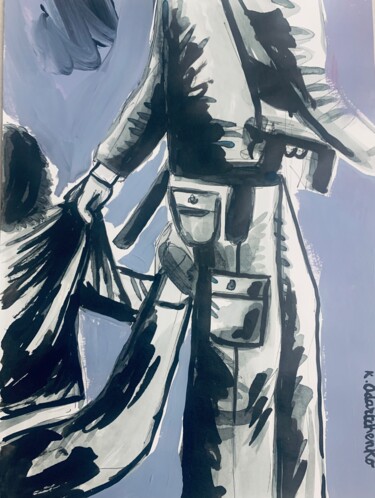
Katia Odartchenko
Acrilico su Carta | 16,5x11,4 in
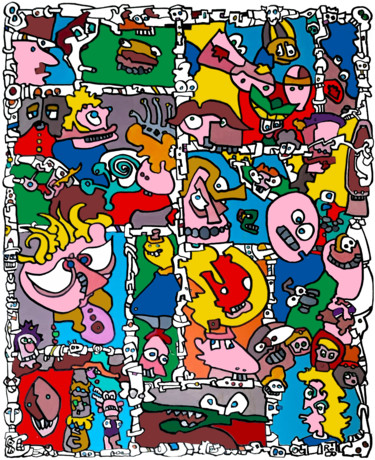
Frob
Acrilico su Tela | 39,4x31,5 in
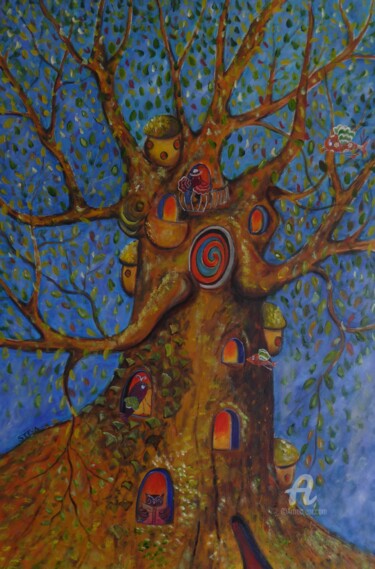
Brigitte Conan (Steva)
Acrilico su Tela di lino | 35,4x23,6 in
